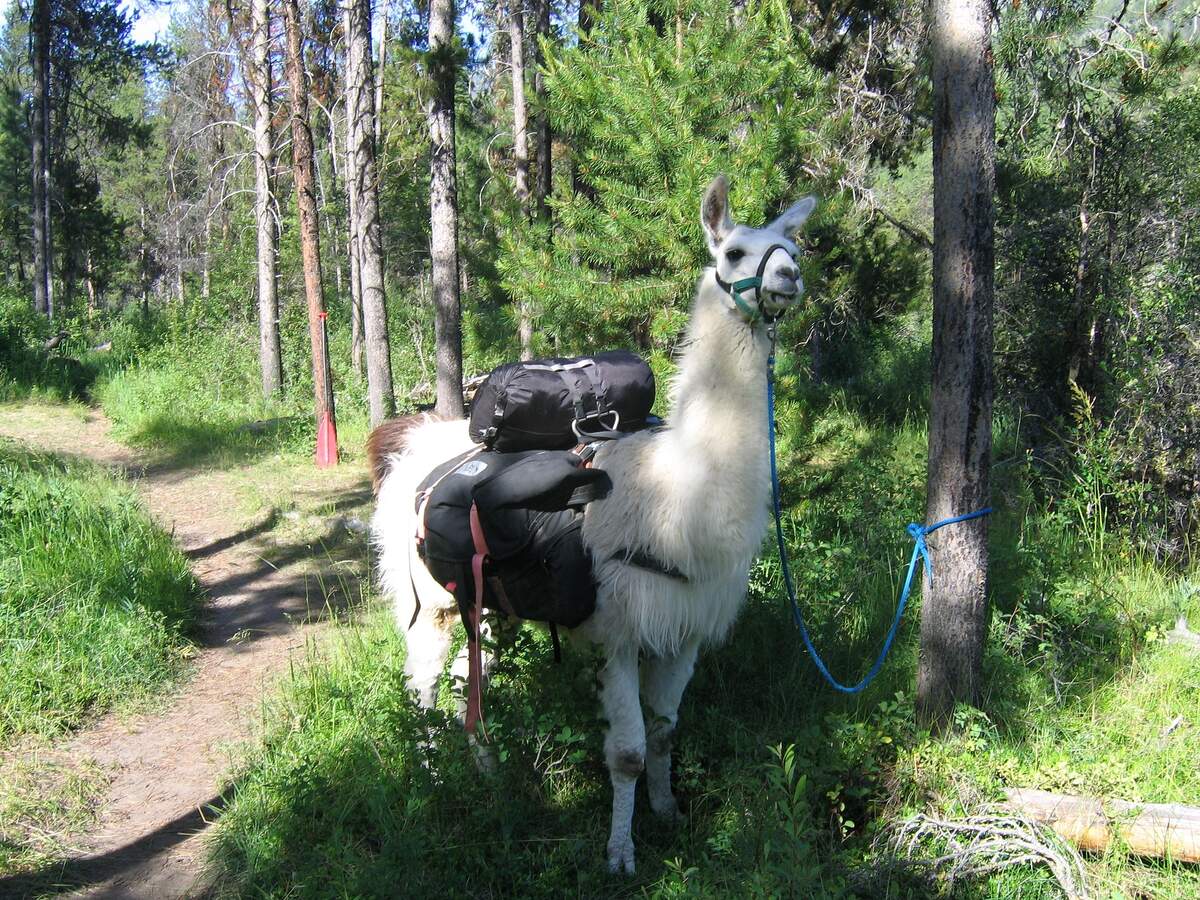

National Llama Day
Observed
annually on December 9th (since 1932)
Dates
Tags
Pets & Animals
Hashtags
Sources
https://web.archive.org/web/20190702175926/http://llamaday.tripod.com/
https://www.britannica.com/animal/llama
https://www.cnn.com/ampstories/world/how-much-do-you-know-about-llamas
https://www.mytwintiers.com/news-cat/weird/december-9th-is-national-llama-day/
https://www.nationalgeographic.com/animals/mammals/l/llama/
https://www.thoughtco.com/fun-facts-about-llamas-3880940
According to one source, National Llama Day was first celebrated in 1932, after it was recognized how important the llama was in Canada, following a drought in the province of Manitoba, where many livestock died, especially sheep. Indeed, there were droughts in Canada during the 1930s, although we weren't able to substantiate this specific drought and its effects. The llama is known for its hardiness, so if there was one animal that proved its resilience during a drought while others were dying, the llama was likely it.
According to this same source, National Llama Day is observed from sunup to sundown. It appears to be a tongue-in-cheek holiday, and not many credible descriptions can be found about it elsewhere, but we're going to treat it in a serious manner. On the day, people dress like llamas, carve butter statues into the shape of llamas, sing songs about llamas, and play "traditional llama-related games." A family member wears a llama costume while passing out gifts to children. A piece of llama fur is hung under a doorway and lovers kiss under it. "Llamatines" are sent to loved ones, sometimes along with candy shaped as llamas. A National Llama Day feast is held, and afterward, children go door to door asking for National Llama Day treats. If someone won't give them any, they sometimes release llamas onto their lawns.
Llamas are camelids that are closely related to the domesticated alpaca, which they are a bit larger than, as well as to the undomesticated vicuña and guanaco. Together, these four animals are known as lamoids. Llamas stand between 5 and 6.5 feet in height at the head and between 3 and 4 feet at the shoulders, and they weigh between 250 and 450 pounds. Females are usually larger than males. Their fur can be solid, spotted, or have patterns, with a color palette including black, gray, beige, brown, red, and white. They are social animals that like to live with other llamas or herd animals. They almost always give birth to only one baby—known as a cria—at a time, which weighs about 20 to 35 pounds. Llamas live to be 15 or 20 years old.
There are millions of llamas in their native home of South America, principally in Peru, Chile, Ecuador, and Bolivia. Over 150,000 llamas can be found in the United States. Llamas can deftly navigate rocky terrain at high altitudes and can withstand harsh environments. They are herbivores that enjoy eating hay while grazing on green pastures, and they don't need much water—which again illustrates their hardiness.
Llamas were first used as pack animals in the Peruvian Highlands of the Andes Mountains, sometime around 2000 to 3000 BCE. Today, pack trains may consist of hundreds of llamas moving goods. A llama can carry about 25 to 30 percent of its body weight and can travel as such about 20 miles in a day. If it is overloaded, it often refuses to move until the load is lessened. Llamas are smart and can easily be trained. Some are used as therapy animals, while others are used as guard animals for sheep, against coyotes and dogs. They can make a high-pitched scream, and they spit to assert dominance over other members of their pack and to deter predators. (Watch out humans, they are known to spit on you as well.)
Llama fleece has been used to make textiles in Peru for thousands of years. Today, the llama's soft fur undercoat is used to make garments and handicrafts, while the more coarse outer coat is used to make rugs and ropes. The hides are used to make leather, and the tallow is used to make candles. Sometimes llamas are eaten, and their excrement can even be burned for fuel!
How to Observe National Llama Day
Here are some ideas on how to spend the day:
- Visit some llamas at a zoo or petting zoo. Make sure to avoid getting spit on by the llamas.
- Get yourself a therapy llama.
- Rent a llama to ride. Remember, llamas can only carry about 30 percent of their body weight. So, if they are a small llama or you are a large person, they may stubbornly sit and refuse to carry you. Can you blame them?
- Dress up like a llama.
- Carve a llama-shaped butter statue.
- Sing some songs about llamas.
- Play "traditional llama-related games." You first will need to find out what these games consist of. Good luck.
- Have a family member wear a llama costume while they pass out gifts to the children.
- Hang a piece of llama fur under a doorway and encourage all lovers to kiss under it.
- Give out Llamatines to your loved ones. You could include candy shaped as llamas.
- Have a National Llama Day feast. The traditional meal is prepared by stuffing a partridge with okra, timothy, and clover.
- Follow the feast by having children go door to door to ask for National Llama Day treats. If they are denied treats, you could release some llamas onto the lawns of the treat deniers.
- Watch a documentary about llamas such as Llama Nation.
- Read a book about llamas.





















